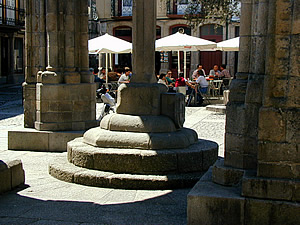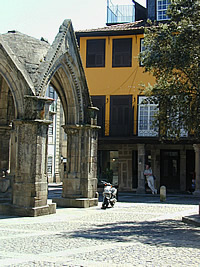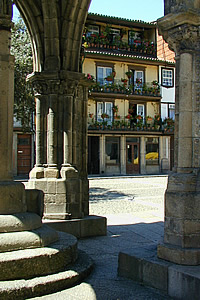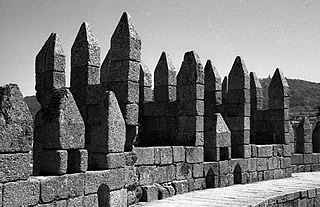

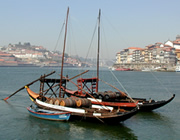
Porto set on the gorge of the River Douro was a base for more Peninsular War researches, but the city and surrounding area have much to offer visitors.
We visited a port wine lodge, explored an amazing Celtic hill settlement and enjoyed a fantastic meal at Chaves.
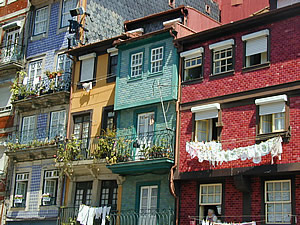
Down by the Douro River the houses clamber up the north shore and look across to the port wine lodges on the other side in Vila Nova. Spanning the river are several bridges, the most impressive of which is the two-tier Ponte Luis I. We walked over both levels - the upper one is amazing with terrific views and a long way down to the river below!
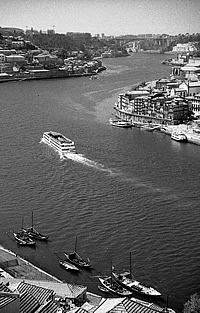
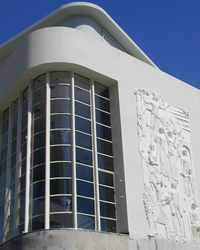
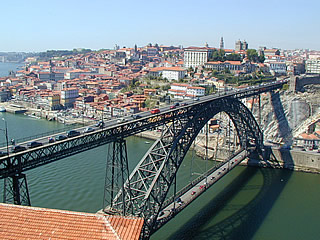
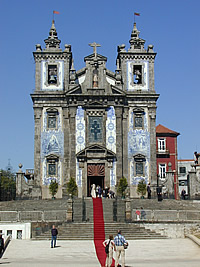
We stayed at the Mercure Batalha Porto very centrally located on Praca Da Batalha. Here is the eighteenth century Igreja de Santo Ildefonso, its baroque style reprieved (in my view!) by a tiled facade of azulejos. This tiling was first introduced by the Moorish invaders and is evident all over Porto.
However, much more to my taste is the wonderful Art Deco Cinema Batalha. This is a very fine example of Art Deco with elegant curves, tall windows and bas relief carving of stylised figures in gleaming white. It was being renovated while we were there so we couldn't go inside but the exterior is superb.

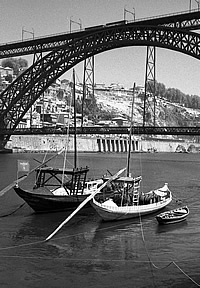
Porto is probably most well-known for port wine. The Rough Guide to Portugal has a good description of how the trade grew up. At the beginning of the eighteenth century there were many British merchants living in Porto, engaged in trade including imports of British cloth and Newfoundland cod. Portuguese wines became increasingly popular in Britain when the import of French wines was periodically banned during periods of war.
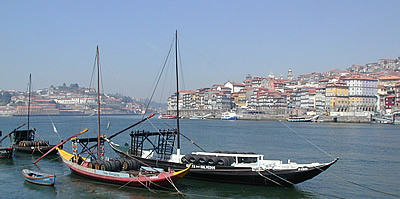
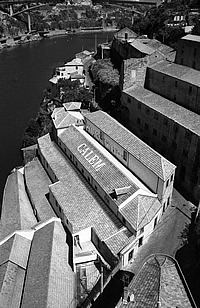
In 1703 export of Portuguese wines to Britain was given a further boost by the Methuen Treaty which reduced import duties to Britain in return for the removal of Portuguese restrictions on British woollen goods. The port wine trade became immensely profitable and many inferior wines were pass off as port to cash in on the bonanza.
In order to protect the good name of genuine port the Marquis de Pombal founded the Companhia Geral de Agricultura dos Vinhos do Alto Douro in 756 and to restrict the area from which port wine could come. Port wine lodges were established in the aftermath of the treaty at Vila Nova de Gaia on the south side of the Douro in Porto.The restricted area for port wine production extended along the Douro and used to be transported by barge down the river.
We visited one of the smaller port wine lodges, the Cálem lodge, founded in 1859. Outside on the river some of the traditional style port wine barges are moored.
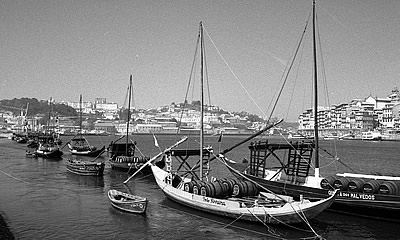
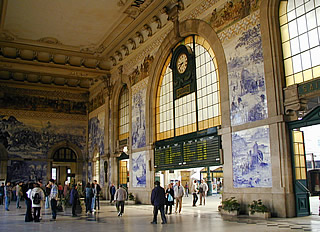
Porto main railway station is decorated with magnificent azulejos - ceramic pictures - by Jorge Colaço. These cover the station entrance hall walls and it looks magnificent. The azulejos are on two themes: the history of transport and the Battle of Aljubarrota.
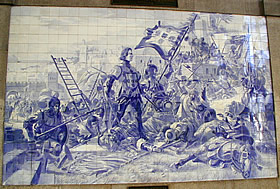
This was on the way to the eighteenth century Torré dos Clerigo, at 76 meters the highest tower in Portugal. We climbed the 225 steps for the great views over the city.
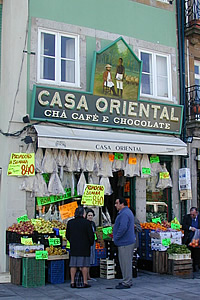
Nearby a very colourful store, Casa Oriental, had huge amounts of bacalhau hanging outside - this is a Portuguese delicacy: dried, salted cod. I tried this at the restaurant Mesa Antiga which was billed by the Rough Guide as having excellent regional specialities but it was not at all to my taste - I found it disgusting! One of their other specialities is tripe.
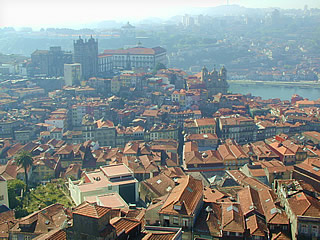
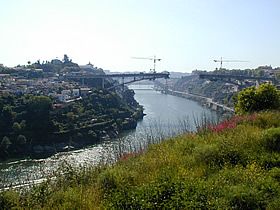
From the tower it is an easy walk to the Sé (cathedral) which was built over a long period from 1110 to the thirteenth century. It is generally Romanesque with some Gothic and Baroque features.It has very unusual onion domed towers flanking the main entrance and rather nice Gothic cloisters.
Late one afternoon we walked to Largo do Padre Baltazar Guedes to see the former Bishop's Sanctuary where British infantry gained a foothold on the French-held north bank of the Douro on 12th May 1809. The return walk in still-intense heat was exhausting!
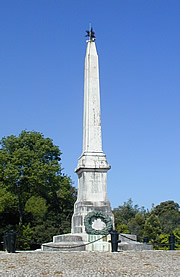
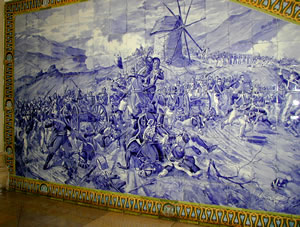
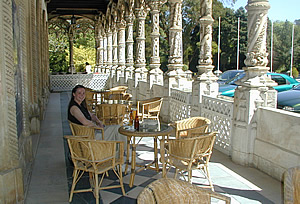
We visited this now-forested area mainly to explore the site of the battle of 27th September 1810 in which a British-Portuguese army commanded by Wellington famously defended the Buçaco Ridge against an onslaught from Masséna's French infantry.
We had a really nice light lunch in the Hotel Palace do Buçaco: mixed sandwiches and a house red (Bairrada) - the inside of the hotel had really lovely azulejos. In the convent next door was a plaque to "glorious General ....... Wellington". Following his victory at the Battle of Buçaco he spent the night at the convent.
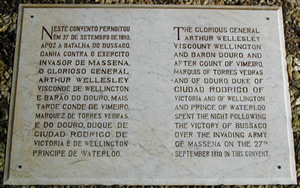
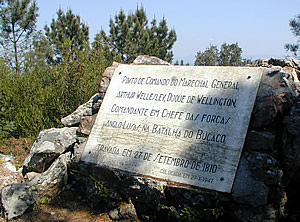
After lunch we explored the Ridge, managing with some difficulty to find the inscribed stone marking the site of Wellington's first command post at the battle!
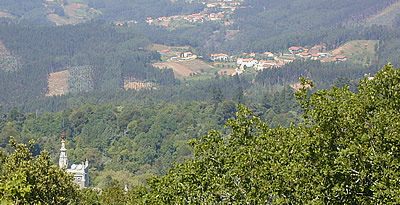
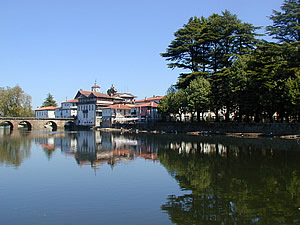
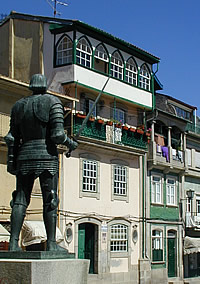
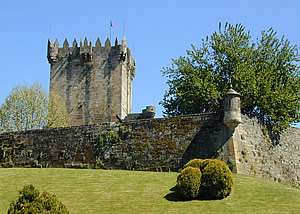
Chaves (the name means "keys") is a town in the far north of Portugal near the Spanish border, about two hours away from Porto by car. Chaves is famed, among other things, for gastronomy so we came here primarily because we had heard of a very good restaurant, the Carvalho (very highly recommended by the Rough Guide), and we were not disappointed, lunch was truly excellent. We both had dried, smoked ham - one of the local specialties - with mango to start; then pork - ribs for me and loin for Andrew. Mine with a tomato salad and a very good local specialty dish of rice and beans. Washed down with a superb 22 year-old Bairrada. We don't usually have three courses but made an exception here. I had a fantastic mango mousse and Andrew rabanados: a sort of French toast with sugar and cinnamon.
The town, in a tranquil location on the river Tamega, is quite old - it has a Roman bridge from about 100A.D., a small medieval centre and a castle of which only the fourteenth century keep remains. Chaves also has a well-known spa with hot, supposedly beneficial, waters.
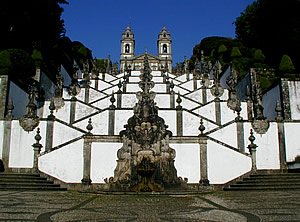
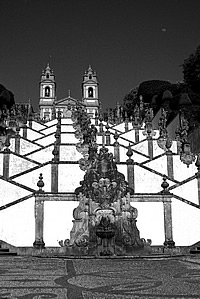
We drove back to Porto via Braga through very beautiful landscape: lakes and deep river gorges. We made a stop at Bom Jesus, climbing the hillside among woods and gardens in lovely low light. It is an ornamental staircase, built from granite and white marble created by the archbishop of Braga in the early eighteenth century. It was not built in response to a religious occurrence or revelation but is, nevertheless, a place of pilgrimage.
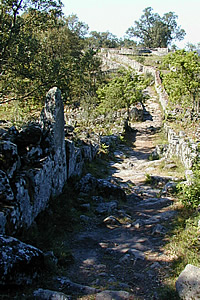
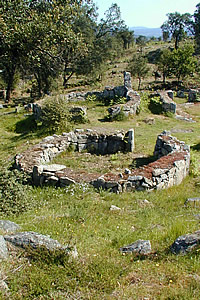
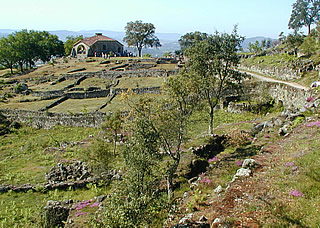
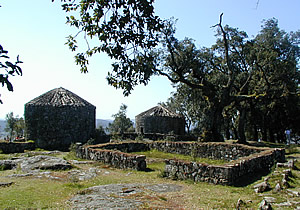
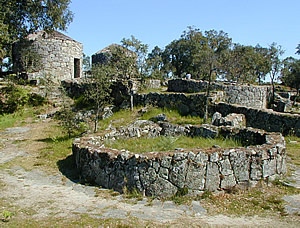
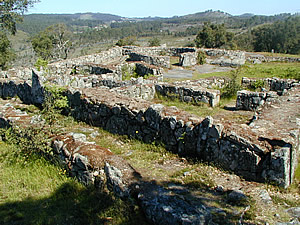
This is an amazing place - a late Iron Age Celtic hill settlement. It was occupied from around 300BC and was a stronghold against the invading Romans, finally succumbing around 20BC. The Roman historian Strabo describes them as organising mass sacrifices and inspecting prisoners' entrails without removing them! On the more domestic side he says that they lived simply, eating bread made from ground acorns, drinking water or beer and sleeping on the bare earth.
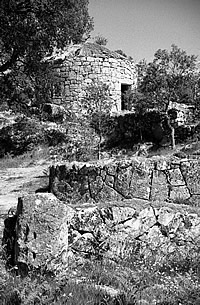
The excavated site shows the remains of over 150 mostly round huts within four series of defensive walls with vestiges of their respective moats. A couple of the huts have been reconstructed to give some idea of the scale. A larger circular building may have been a meeting place, having benches up against the walls which is as Strabo describes a gathering.
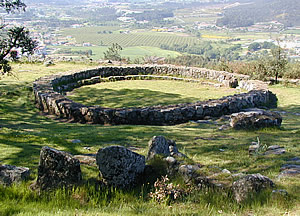
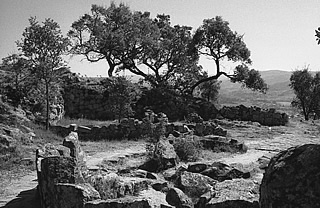
They seem to have been quite fond of circular structures, perhaps for their inherent stability.
There is a very well defined road system with two roughly parallel main roads crossed by many smaller roads.
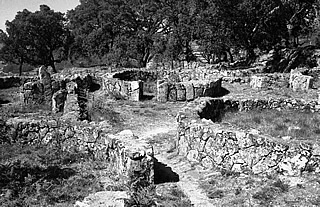
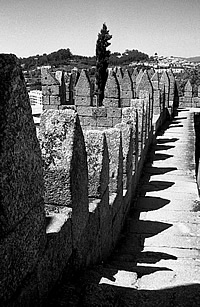
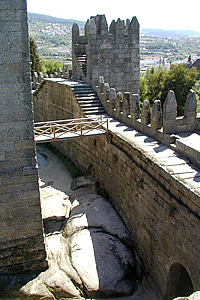
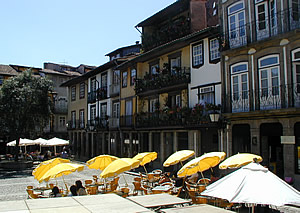
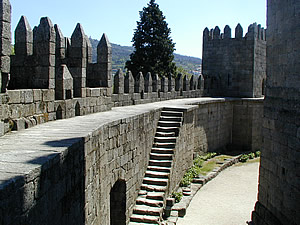
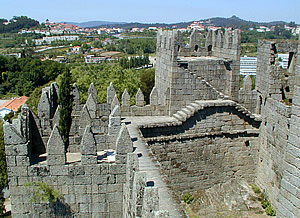
Famous as the town from which the reconquest of the Moors began and the birthplace of Afonso Henriques in 1110, the first king of Portugal, Guimarães is a pleasant spot.
We had lunch here and explored the eleventh century castle and a little of the town but it was an unbearably hot day so eventually we admitted defeat and returned to Porto for showers and a cool beer! The battlements of the castle are quite fantastic though, well worth a visit.
